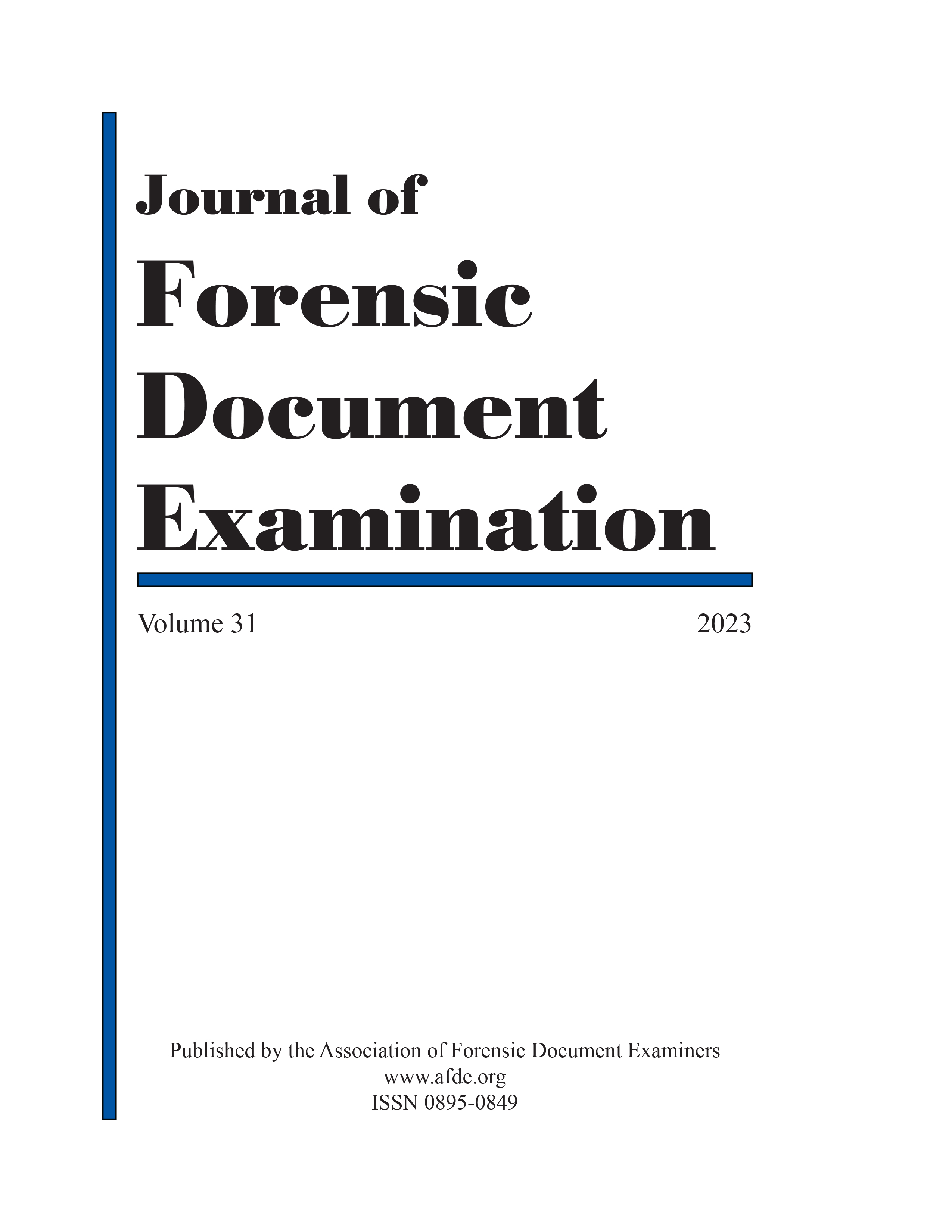The Audley End Annotations
Applying Huber and Headrick’s Elements of Handwriting Discrimination To a 16th Century Unknown Document
DOI:
https://doi.org/10.31974/jfde31-13-66Keywords:
Forensic handwriting analysis, early modern English handwriting, Shakespeare authorship question, Audley End annotations, marginal annotations as literary evidence, Edward de Vere, 17th Earl of Oxford, Sir Henry Neville, standards for handwriting verificationAbstract
Abstract: This study investigates the writership of a series of 16th century annotations found in at least six books in the library of Audley End House in Essex, UK, which are of possibly historic significance on account of their alleged connections of plot and theme to several of Shakespeare’s plays, especially Julius Caesar (c. 1599) and Antony and Cleopatra (c. 1601). Audley End is a storied mansion, rebuilt by Thomas Howard, 1st Earl of Suffolk, c. 1610 for the express purpose of entertaining King James on his annual progress of English Great Houses. Today operated by English Heritage, the site preserves an impressive library with at least 128 books predating 1604. In 2016, John Casson and William Rubinstein proposed that the annotator of a number of these volumes was Sir Henry Neville (1564-1616), an early owner of the Billingbear estate in Berkshire from which some of the oldest books now at Audley End were evidently transferred circa 1920-1924.
If Neville was, in fact, the author of the annotations, would this belief hold up under scrutiny if the principles of forensic document examination were applied? If not, is there another contemporaneous writer whose control sample is a better fit? To make this determination, eight of the 21 “Distinguishing Elements of Handwriting” identified in Huber and Headrick classic text Handwriting Identification: Facts and Fundamentals (1999), were applied. These eight, as numbered by Harrelson and Huber (2018) include Class of Allograph (6.2.1.2), Allograph Combinations (6.2.1.4.5), Design and Construction of Allographs (6.2.1.4), Diacritics (6.3.4), Numerals and Textual Symbols (7.2.1), Connections and Terminations (6.2.1.3), Consistency and Natural Variation (6.4.1), and Embellishments (6.3.5). An additional standard, defined as Whole Word or Letter Sequence Comparison, supplies insight into at least two further discriminating elements, Connections (6.2.1.3), and Spacing (6.2.1.7), as well as affording a larger field of reference than do discriminating elements of single characters. Bold-face words are in the glossary.
After applying these standards to the writing of Sir Henry Neville and finding that Neville’s writing contains many unexplained differences from the Audley End Unknown hand, the article then considers and tests the alternative hypothesis that Edward de Vere, 17th Earl of Oxford (1550-1604), is the writer of the question document annotations. After a thorough investigation applying the same standards used to test the hypothesis of Neville’s writership, the evidence instead supports the conclusion that de Vere is a more plausible writer of the Audley End annotations.
Published
How to Cite
Issue
Section
License
©2024 Journal of Forensic Document Examination (JFDE). All rights reserved. Written permission must be obtained from the editor of the JFDE at journal.jfde@gmail.com before copying, transmitting, storing, printing, or using for any other means. Authors may copy their article for educational and research purposes exclusively, retain the research data, and receive proper attribution and credit for their work.

